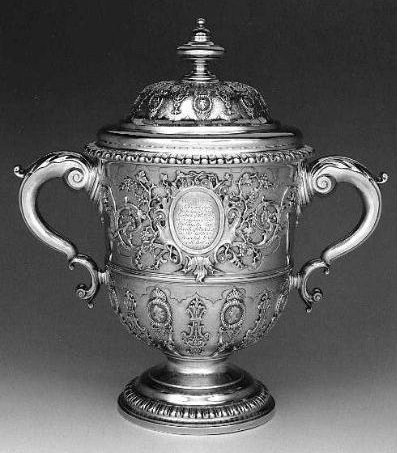ANTIQUE SILVER PAUL CRESPIN
Athough born and brought up in England as a member of the Crespin family that fled France as Huguenot refugees in the late 17th century, Crespin still felt sympathetic to Parisian designers. One of his earliest extant pieces from 1720, an octagonal casket, was hand-chased all over in the Regence style, and many of his later Rococo pieces reflected this earlier work.
In 1726, Crespin joined forces with a number of other Huguenot goldsmiths and silversmiths, including Paul De Lamerie, to provide a large dinner service to the Empress Catharine of Russia. Crespins's contribution, a large two-handled hand-chased cup and cover, is on display in the Hermitage Museum, in St. Petersburg.
In 1727 Crespin, then aged thirty-four, married Mary Branboeuf, with whom he had five children, although only three survived through infancy. None of his surviving children appear to have followed in their fathers footsteps as a goldsmith.
In the 1730s and 1740s Crespin produced most of his finest work, and proved that not only was he a fine craftsman, but also a courageous designer and innovator. Because of this many of his interesting pieces caught the eye of the Royal family and many nobles. Ducal and other noble commissions for important pieces flowed into his workshops from the Dukes of Portland, Somerset, and Devonshire, and the Earls of Rockingham and Albemarle.
In 1741 Crespin received his most important commission from Frederick, Prince of Wales, for a very large and impressive table centrepiece weighting over 1,000 troy ounces. This piece was festooned with figurines and decoration based on a marine and nautical theme, including Neptune with trident, dolphins, mermaids, rocks, and shells. This piece is still in the Royal collection at Windsor Castle.
Although many of his later pieces were more commercial, including small domestic items such as salvers, dishes, and baskets, they were all still of the highest quality, and his legacy to the goldsmiths and silversmiths trade in England should not be under-estimated. In 1759 Crespin retired from his trade and went with his wife to live in Southampton, where he passed away on 25 January 1770.












